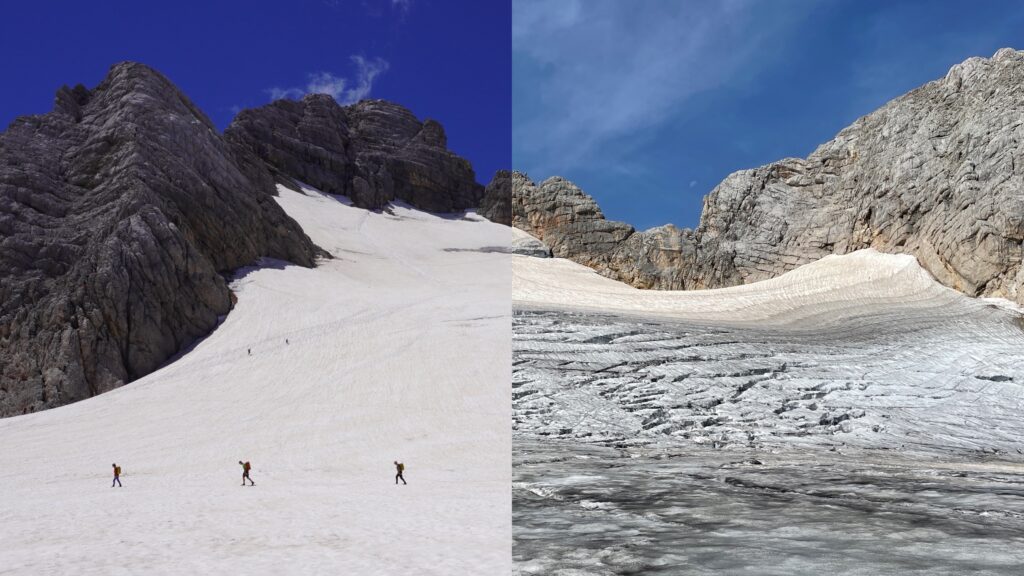
Information

Have you ever wondered where the dark spots on glaciers come from? They are called cryoconite and consist of tiny particles that collect on glacier surfaces in summer. The word comes from ancient Greek: krýos means ice and koníameans dust.
Cryoconite consists of a mixture of organic materials such as algae and bacteria and inorganic materials such as rock dust.
The dark color of rock dust and algae absorb sunlight. Instead of reflecting the light, as white snow does, cryoconite particles absorb the energy of the sunlight and thus warm the surface of the glacier. This causes the ice to melt more quickly.
The composition of cryoconite is crucial to its effects. When algae and bacteria multiply in the cryoconite particles, more dark spots are created and absorb even more sunlight. This increases the melting process. These algae can also release nutrients that favor the growth of other types of algae, which promotes the melting.
Research on cryoconite is important to understand the complex interplay between organic and inorganic materials and to find possible solutions to limit glacier melt. After all, the better we understand the role of cryoconite, the better we can take action to mitigate the effects of climate change on our glaciers.
In the following experiment, we determine the organic part of the cryoconite (the part that consists of algae and bacteria) and determine the composition of the inorganic part (that is the part that consists of rock dust).

